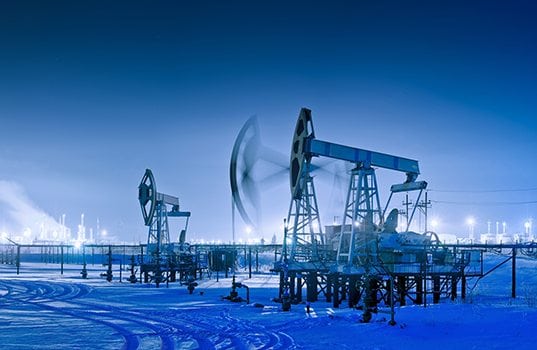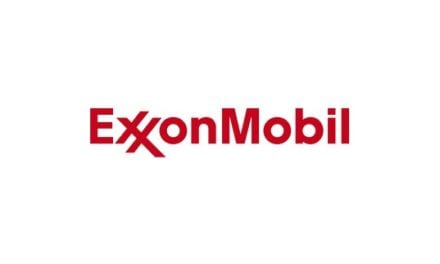By Keith Reid
Saudi Arabia’s price/market share war against U.S. shale production continues and the news from mainstream sources has been gloomy. There have been numerous articles citing dropping rig counts, financial doom in the oil patch, lender lamentations and other, negative “glass half empty” prognostications for U.S. shale oil producers. Saudi Arabia regularly claimed victory in this war during 2015. The International Energy Agency even jumped on that bandwagon in September.
But a funny thing happened on the way to that domestic energy “disaster”—U.S. production, while down, continues at near record levels. While some of that hinges on playing out previous investments, that’s hardly the full story. Operations have become dramatically more efficient. Wells have been shut down but unlike conventional oil, are easily restarted. And while prices are bearish, Wall Street seems to be bullish more long-term.
Even if Saudi Arabia were to “win” this ongoing campaign, winning the long-term war is difficult to imagine. The Saudi economy (and much of OPEC for that matter) relies on oil priced in the $80-$90 range for life as usual. In the current battle the kingdom has been burning though resources like mad. As THIS Bloomberg article in October noted:
The biggest Arab economy may run out of financial assets needed to support spending within five years if the government maintains current policies, the International Monetary Fund said this month. Authorities are already considering spending cuts and the government is selling domestic bonds for the first time since 2007 to shore up public finances.
“It’s an even larger drop than I’d anticipated, and the sharp fall in foreign security holdings is particularly striking,” Simon Williams, chief economist for central and eastern Europe, the Middle East and North Africa at HSBC Holdings Plc, said by e-mail. The size of reserves leaves the kingdom in a “very comfortable position, but with oil prices so low and the deficit so large, those savings will continue to decline at a rapid rate through this year, next and beyond,” he said.
The following press release from Saudi Arabia further illustrates the point:
Economic Reforms to Dominate Discussions at GCF 2016
Decreasing Saudi Arabia’s reliance on oil revenues could include the introduction of VAT and so-called sin taxes, increasing religious tourism and securing major investments to build vibrant education, transport, and healthcare sectors, with each of these strategies being considered in the biggest reform of the Saudi economy for decades.
Other issues under consideration include the partial privatization of selected state assets—including Saudi Aramco—and better utilization of state-owned real estate, with all these issues and many more to be discussed at the forthcoming Gulf Competitiveness Forum, to be held at the Four Seasons Hotel in Riyadh, January 24-26.
“The Kingdom has been successfully diversifying its economy over the past decade, with non-oil revenues increasing by 29 percent this year alone,” said HE Abdullatif Al-Othman, Governor of the Saudi Arabia General Investment Authority (SAGIA).
“However, falling oil prices mean that we have to accelerate those efforts, which we are doing by focusing on the industry sectors that can make the greatest contribution in terms of job creation, economic diversification and localization of products and content,” he said.
Reform measures already implemented include cutting fuel and electricity subsidies, and cost reduction measures introduced across the public sector.
The country’s new and growing mining industry is another key focus for boosting non-oil income. Saudi Arabia has successfully developed a mine-to-market value chain for aluminium, boasting among the lowest production costs in the world, is blessed with significant phosphate deposits, and has an estimated six percent of world uranium reserves.
“The Kingdom’s commitment to economic reform is very much a recognition of changed realities, but it is also an acknowledgement of new and exciting opportunities for both investors and Saudi Arabia. The GCF provides the perfect platform to discuss these issues openly and transparently, and share best practices with global experts,” said Al-Othman.
And for all the gloomy talk about the impact on U.S. oil investment, the financial industry seems ready to ride things out, and apparently the cost to do so is not prohibitive. Industry analyst and FMN contributor Alan Levine stated in a recent industry interview that the financial industry is still making loans based upon the long-term, fundamental opportunity of abundant supply and future profitability of oil (at prices far short of the really gloomy oil prices that were the topic of media conversation just a few years ago). As THIS Jan. 2016 Bloomberg article notes:
The four biggest U.S. banks — Bank of America Corp., Citigroup Inc., JPMorgan Chase & Co. and Wells Fargo & Co. — have set aside at least $2.5 billion combined to cover souring energy loans and have said they’ll add to that if prices stay low.
The gist is of the article that marginal operators and speculators unaccustomed to the price swings in the industry are feeling the pain, but others are there to take advantage of the situation with an eye on the future.
This is not to downplay the impact that oil below $30 is having on shale producers (marginal or otherwise) or their employees who might find themselves downsized. But nothing is happening to make oil that is profitable starting around a $30 threshold magically disappear. When prices rise, as they most certainly will, a leaner, rationalized production sector will get the financing it needs and take over where things left off. The market is seen by a range of analysts (and nations like Russia) to be poised to settle out somewhere between $40 and $60 per barrel as a new normal. It would take an extraordinary disruption in the current world order to see oil prices at a high where the Saudis would be “victorious.” And such a disruption would likely be centered on the Middle East and come at the expense of the oil producing nations in the region. For example, Shia/Sunni tensions, recently inflamed by Sunni-dominated Saudi Arabia’s execution of a major Shia cleric have led to increased tensions with Shina-dominated Iran.
Further, with Iranian production coming back online pressure will hardly be supporting a bullish price perspective. And along those line, and truly frightening, would be a significant downturn in the world economy following a Chinese crash or some similar event from Europe. Demand would drop and so would oil prices, but that would hardly be cause to celebrate.





